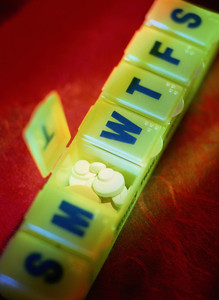Period: January to August 2012
The US is somewhat behind Europe in the biosimilars race, but has issued draft guidance and is expected to have a practical biosimilar approval pathway in place in the near future.
 0
Post your comment
0
Post your comment
Period: January to August 2012
The US is somewhat behind Europe in the biosimilars race, but has issued draft guidance and is expected to have a practical biosimilar approval pathway in place in the near future.

The three biosimilar guidance documents provide FDA’s current thinking on key scientific and regulatory factors involved in submitting applications for biosimilar products to the agency [1].
The FDA approach is that via the biosimilars pathway, biological products will be approved based on demonstrating they are biosimilar to, or interchangeable with, a biological product that is already approved by FDA – the reference product [1]. However, there is still much debate, as to what exactly will be required by FDA, especially in the area of requirements to prove interchangeabilty.
This article discusses some of the research papers on the regulatory issues surrounding biosimilars that have been published during the period of January to August 2012. Topics investigated by researchers cover issues faced by FDA, including biosimilar user fees and whether clinical trials will be required for all biosimilars.
The situation in the US
With final guidance from FDA on biosimilars still under construction, authors are still speculating on how the biosimilars approval pathway will be used and how user fees will contribute to biosimilar approvals.
In a study by Barlas FDA’s new guidance and user fee programme for biosimilars are discussed. Barlas expects Hospira to be the first US biologicals company to take advantage of the expedited approval pathway for biosimilars established by the Biologics Price Competition and Innovation Act of 2009 (BPCIA), but does not expect its biosimilar erythropoietin to be on the market in the US until at least 2015 [1].
Thus, with FDA ready to issue final guidance on requirements for what are called 351(k) expedited biosimilar applications and having issued a new user fee programme to pay for the examination of those applications, there will be many entrants in the race to be first in the 351(k) pipeline [1].
According to Barlas, the most controversial and important issue surrounding the draft and final guidances is the FDA’s approach towards interchangeability. FDA says companies can apply for an interchangeability designation. But it goes on to say that it would be ‘difficult’ for applicants ‘as a scientific matter to establish interchangeability in an original 351(k) application’ [1].
In a study by Dr Blackstone et al., the authors discuss the problems faced by FDA in implementing the new biosimilars approval pathway. Just some of the questions broached in the paper include whether FDA will require clinical trials for all biosimilars, what will be the basis for testing whether a product is biosimilar to the brand-name product, which product will be the benchmark – the original brand-name biological or the one currently being manufactured, will FDA’s biosimilar policy differ by product and will FDA allow clinical trials done outside the country, such as those done in the EU, to be used for the approval process? The authors expect to see considerable controversy as various interests either support or oppose the biosimilars approval pathway. They also expect that FDA will ensure that the biosimilars market develops. They conclude that it is critical that FDA attains a balance that encourages both innovation and competition in the biologicals industry [2].
Authors Ahmed et al. carried out a review of the literature by searching PubMed, EMBASE, and MEDLINE for relevant papers pertaining to biologicals manufacturing, comparative analysis of biosimilars and originator biologicals and relevant review articles on biosimilars. Their research provides evidence that current EU guidelines have resulted in the approval of biosimilars with comparable efficacy and safety profiles for the recommended indications of their respective reference originator biologicals. It is anticipated that these precedents will serve as a starting point in the development of a process for approving biosimilars in the US and worldwide to provide efficacious and tolerable biotherapeutics with a significant cost advantage for national healthcare programmes and consumers [3].
Finally, The Lancet urges FDA, while it awaits its first biosimilar regulatory application, not to forget to integrate the data, experience, and lessons learned by EMA, which has approved a dozen biosimilars since 2006 [4].
The research clearly highlights that the regulatory situation in the US is still not clear and FDA would do well to follow the example set by EMA, with its successful history of biosimilars approvals.
Related articles
Overview of research on regulatory issues surrounding biosimilars in 2012
Overview of research on biosimilarity/comparability and interchangeability of biosimilars 2012
Overview of research on safety and immunogenicity of biosimilars in 2012
Naming and interchangeability of biosimilars raised in new survey
References
1. Barlas S. FDA readies new guidance and user fee program for biosimilars. Biotechnol Healthc. 2012;9(2):28-9.
2. Blackstone EA, Fuhr JP. Innovation and competition: will biosimilars succeed? Biotechnol Healthc. 2012; 9(1):24-7.
3. Ahmed I, Kaspar B, Sharma U. Biosimilars: impact of biologic product life cycle and European experience on the regulatory trajectory in the United States. Clin Ther. 2012;34(2):400-19.
4. Approval of biosimilars in the USA–dead ringers? The Lancet. 2012;379(9817):686.
Permission granted to reproduce for personal and educational use only. All other reproduction, copy or reprinting of all or part of any ‘Content’ found on this website is strictly prohibited without the prior consent of the publisher. Contact the publisher to obtain permission before redistributing.
FDA approves six denosumab biosimilars
EMA recommends approval for four biosimilars targeting three therapies
Samsung Bioepis wins Pyzchiva case; Regeneron patent rulings threaten foreign biosimilars
Chinese biosimilars go global: growth, partnerships, and challenges



Post your comment